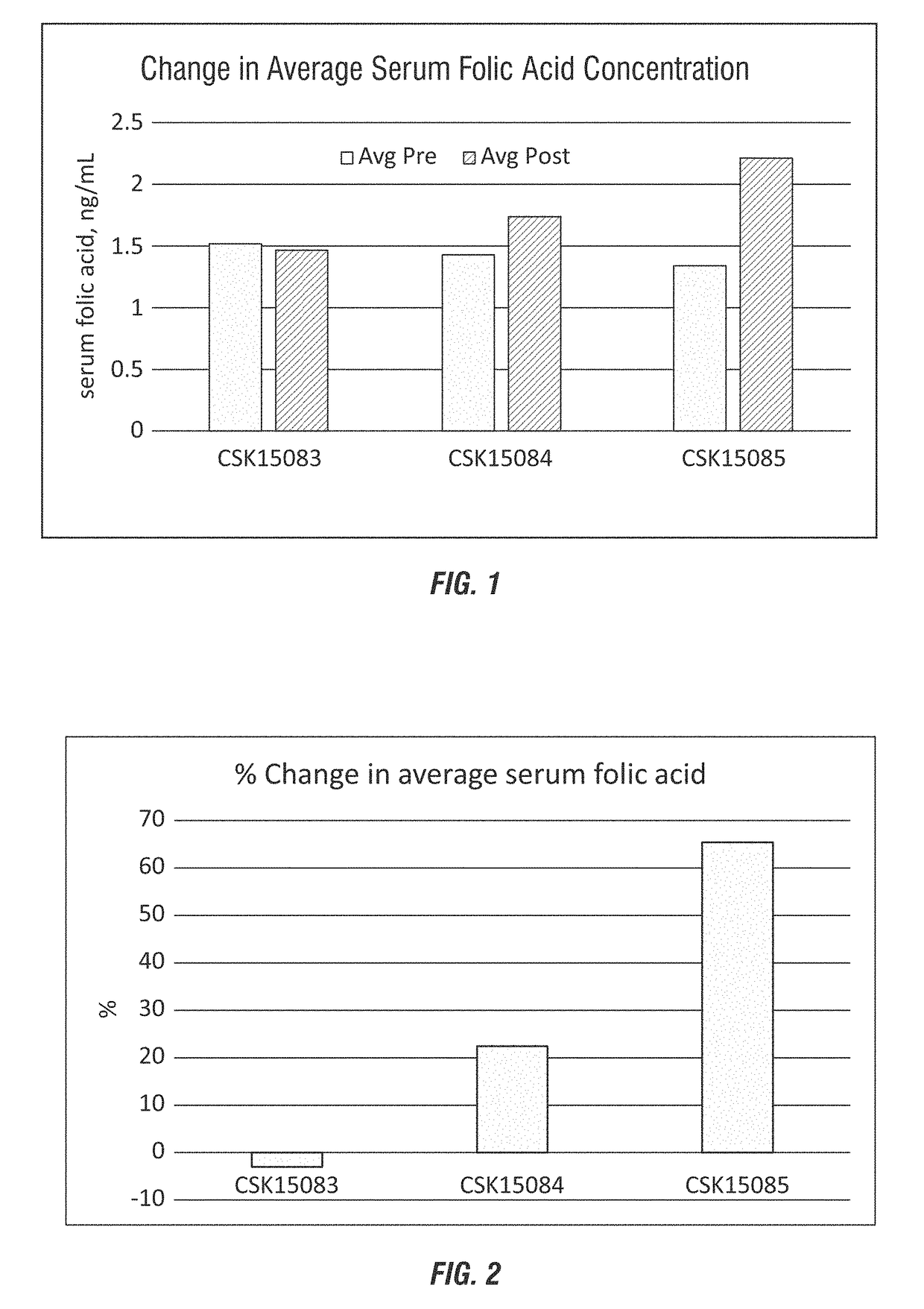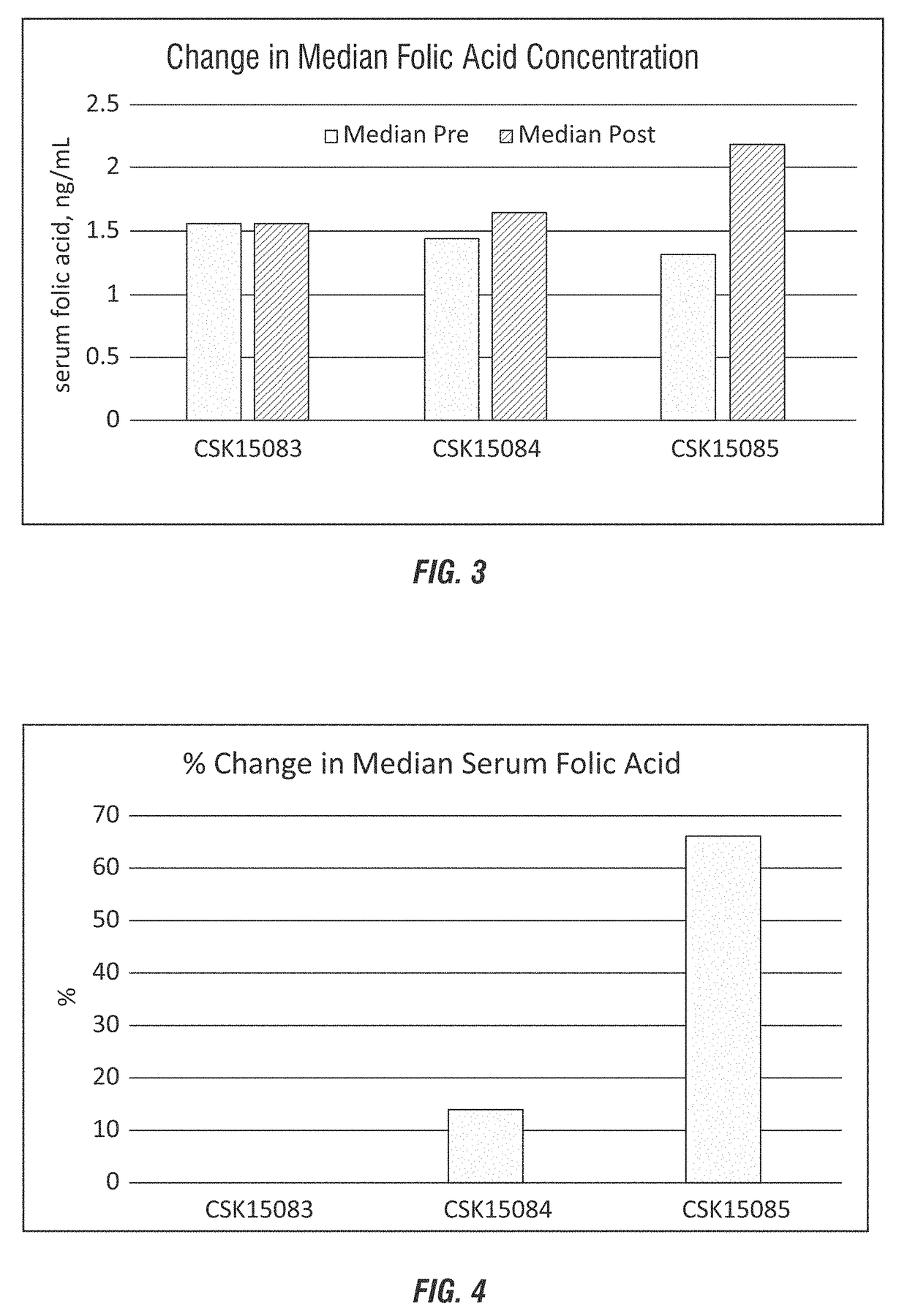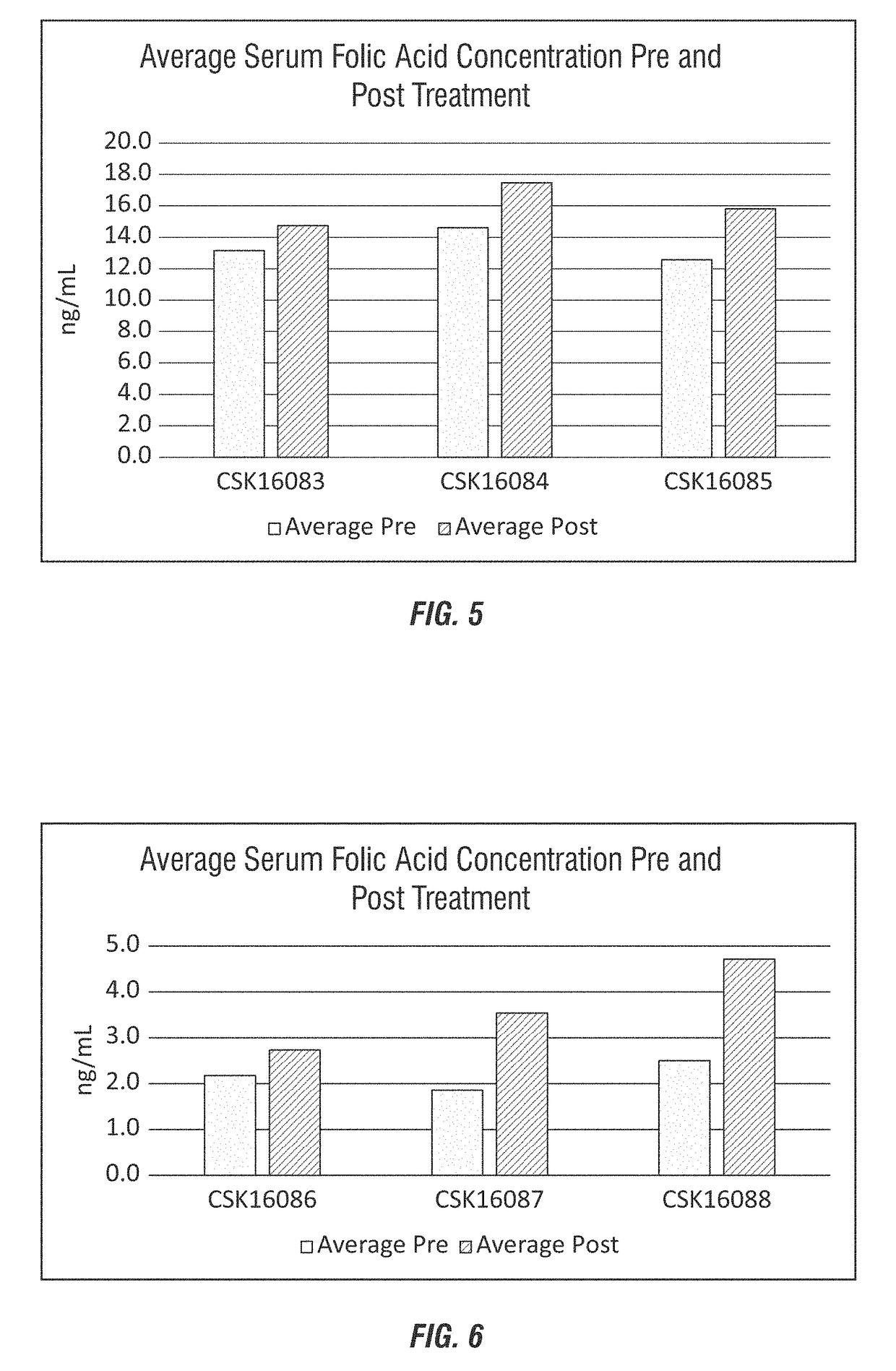Folic acid rumen by-pass method and composition
a rumen and rumen technology, applied in the field of rumen bypass method and composition, can solve the problems of reducing milk production, affecting the health of animals, and proving more difficult in application than in theory, and achieve the effect of enhancing milk production and animal health
- Summary
- Abstract
- Description
- Claims
- Application Information
AI Technical Summary
Benefits of technology
Problems solved by technology
Method used
Image
Examples
example 1
Zinc Folate Mixture
[0027]Sodium Hydroxide (54.42 g, 1.36 mols) was added to 3000 mL of dI H2O. To this basic solution was added Folic Acid (300.1 g, 0.681 mols) which turned a bright orange. The suspension became a solution over the course of 20 minutes of continuous stirring. Zinc Chloride (91.81 g, 0.680 mols) was added to the bright orange solution. This mixture was dried at 60° C. in the vacuum oven to produce a red-orange non-hydroscopic solid (415 g, 98.3% Theory).
example 2
Zinc Folate on Silica Mixture
[0028]Sodium Hydroxide (3.63 g, 0.091 mols) was added to 100.1 mL of dI H2O. To this basic solution was added Folic Acid (20.0 g, 0.045 mols) which turned a bright orange. The suspension became a solution over the course of 20 minutes of continuous stirring. Zinc Chloride (6.08 g, 0.045 mols) was added to the bright orange solution. Silica gel (134.19 g) is then added to the aqueous mixture until the mixture becomes a free flowing solid. Total weight: 220.5 g of free flowing solid.
example 3
Copper Folate Mixture
[0029]Sodium Hydroxide (3.65 g, 0.090 mols) was added to 200 mL of dI H2O. To this basic solution was added Folic Acid (20.00 g, 0.045 mols) which turned a bright orange. The suspension became a solution with 20 minutes of continuous stirring. Copper Chloride dihydrate (7.75 g, 0.045 mols) was added to the bright orange solution. This mixture was dried at 60° C. in the vacuum oven until dry to product a green-yellow non-hydroscopic solid (25.5 g, 91.4% Theory).
PUM
 Login to View More
Login to View More Abstract
Description
Claims
Application Information
 Login to View More
Login to View More - R&D
- Intellectual Property
- Life Sciences
- Materials
- Tech Scout
- Unparalleled Data Quality
- Higher Quality Content
- 60% Fewer Hallucinations
Browse by: Latest US Patents, China's latest patents, Technical Efficacy Thesaurus, Application Domain, Technology Topic, Popular Technical Reports.
© 2025 PatSnap. All rights reserved.Legal|Privacy policy|Modern Slavery Act Transparency Statement|Sitemap|About US| Contact US: help@patsnap.com



